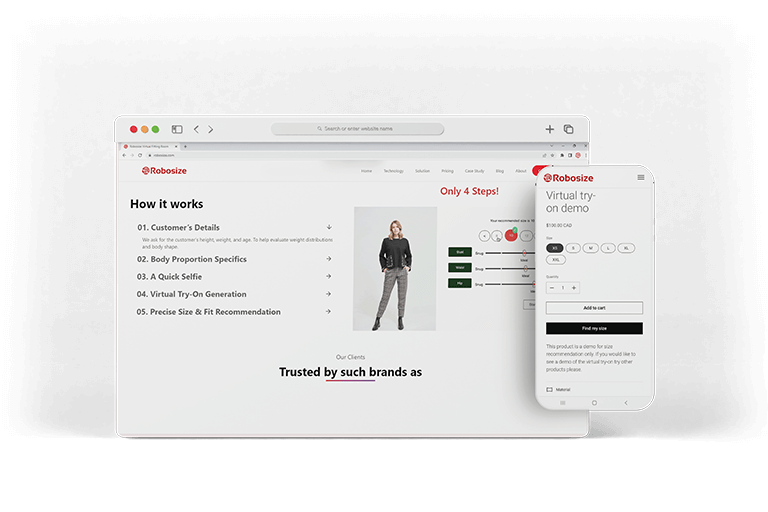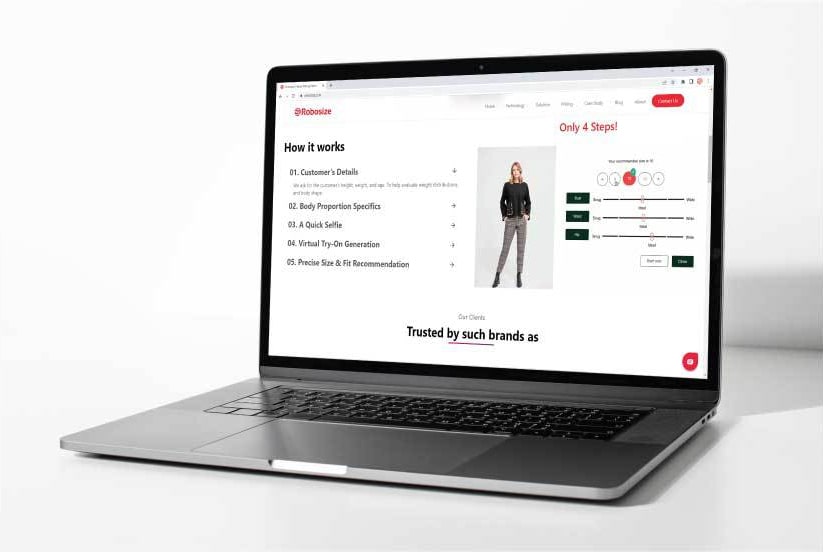It’s easy to get lost in the many details of starting an E-Commerce brand. Not only do you have to keep track of your inventory, advertisement, and catalog, but even subsections of these tasks can lead to massive confusion as well.
Curating your own custom size chart is one of these subsections. Due to its inherently diverse and complicated pattern of application, designing a template for your size chart that can be universally used across your customer spectrum is really hard.
But before you think that this task requires hiring an expert, or worse, before you abandon the idea completely, this article can serve as a good foundation stone through which you can solve a lot of common confusion around making a standard size chart.
So let’s get to it!
What is a Size Chart?
Each person has unique body dimensions that require exclusive attention in order to make fitting clothes for them. This is what is generally known as their size. However this size itself is divided into two separate categories of external, also known as public, and internal, also known as private.
A size chart is a chart, usually accompanied with visual guides, that represents these varying sizes, allowing the customers to much more easily choose from the purchasable options within the catalog.
In recent years, with the advent of online shopping and retail, virtual and online size charts are also becoming a commonality. Nowadays, many different stores and brands, and even dropshippers on websites like Shopify, use virtual standard size charts.

In general, there are over 60 points in the human body that can be measured, a size chart boils down this number to an essential 20 crucial points.
Note: If you want to become familiar with the best size recommendation tool for your fashion eCommerce, check this article out.
1. Devil in The Details: Diversify your Size Chart
So now we know what a size chart is and how a standard size chart for eCommerce stores needs to more or less perform. So with that general knowledge in hand, it’s now time to tackle some of the details of how to make a standard size chart more applicable in general.
This is important as your clothing eCommerce brand will have all sorts of different people coming to it, potentially from international markets.
As a result, you need your size chart to be inclusive and accommodative of their needs in order to retain them as a present, and potentially future client base.
Size Chart for Women
When making a size chart specific for female bodies, there are a number of general tips to follow.
First, make sure that you take into account the critical differences of female bodies compared to male bodies, and include sizing options for areas that a male body may not need in order to make fitting clothes.
A good chunk of older size chart templates, especially from the old US standard sizing list, exhibit inappropriate language, so make sure to update that if you are using it as a reference!
Size chart for Men
Generally, Gentlemen are much more straightforward when it comes to their clothing choices. So curating a standard size chart for them should not be much of an issue. In this aspect, size charts for men have become more or less standardized around the world, and you can use one of the many online templates to tackle the task.
However, if you are aiming to be a male-only brand, then you also need to make a much more comprehensive size chart for men.
Reputable brands usually guard their secret size charts with urgent care, but you can use Robosize’s advanced virtual fitting room to quickly cut through all the needed sizes, document them, and create your own personalized size chart. Get your free demo now!

Fit Advisor
Fit advisor helps your customers find the right size with a few clicks; so they can buy with confidence.
Let`s TalkSize Chart Shoes
In general shoes tend to be rather straightforward to measure and create a size chart for. This is mainly due to the fact that human feet do not differ significantly from gender to gender and also the fact that the measurement points are fixed and small in number.
The only major issue to take note of, is to include measurement and considerations for female high-heel shoes. But other than that, your shoe size chart is probably going to be the easiest part.

Size Chart Shirt
Since shirts tend to be often responsible for covering the upper half of the human body, coming up with a comprehensive size chart that can easily cover both male and female shirts can be difficult. There are lots of different virtual fitting rooms out there that can help you utilize models of varying size and fix this issue.
If you want to skip the excruciating steps of configuring a standard shirt size chart for both genders, then Robosize’s virtual fitting room is a lifesaver.
Vesper’s collaboration with Robosize resulted in an instant increase in sales and reduction in return rates.
Size Chart Jeans
Jeans are another quite difficult clothing item to make a size chart for. Trousers are generally difficult, but the diverse nature of jeans takes it to a whole other level.
You have to take into account skinny jeans, overalls, baggy jeans, etc. A general tip would be to make a general standard size chart for jeans that covers the basics, and advertise other modifications that would affect the sizing as “extra” or “additional features”.
The best approach for jeans would be to avoid complications, as it can get really messy, really fast.
2. One Fit for All: Differentiate External vs. Internal Size
Previously we mentioned the external (public) size chart and the internal (private) size chart. But what are they and how can you use them to good effect? The former is generally used to make your general audience understand the sizing of your brand’s items.
This external size chart is what the customer sees, interacts with, and orders from.
Generally, customers do not like to spend time calculating difficult measurements. As a result, your public size chart only includes the most essential measurements, usually limited to 4 essential sizings of bust, hip, waist, and height.

However, you cannot accurately make a fully fit clothing item based on these general measurements. Therefore, you also need a much more comprehensive size chart that is privately used to enhance your clothing items’ fitting, based on the general info provided by your public size chart.
Don’t rush your private chart. It will take time to convert the general data provided by the public chart into broken down pieces of detailed and tailored info for your private size chart.
3. Perspective: Incorporate Different Measurement Systems
Another pressing matter that you need to absolutely integrate in your public size chart, is the matter of measurement systems.
These days, with online markets becoming international and globalized, you are likely to have customers checking your products from countries that use different measurement systems.
In general there are two different size measurement systems. These being the Imperial system and the decimal Metric system. Make sure that both of these systems are interchangeably incorporated as part of your UI.
This will make the customer feel respected and represented, and also will reduce the return rate of your products.
4. Hit the Jackpot: Use the Right Tools and References
In the end, templates and online free research only will get you so far when creating a standard size chart.
Most reputable size charts are kept private and secret. These size charts reflect the overall customizations and personal tailoring of the sizing that you have done for your own set of items within the online catalog.

Therefore, it can be said that all size charts are unique and products of experience and evolution of different brands’ items over time. So you are going to need time, and more importantly, the right set of tools and references.
There are lots of different virtual fitting rooms and measurement services that will help you. But you have to be careful not to mix up several methods at once. This will lead to a convoluted, average final product that is a jack of all trades and a master of none.
Robosize’s virtual fitting room is designed to allow you to make measurements using a single selfie, make notations, and store them for your own catalog.
Check out the case studies of our collaborations with the likes of Silvertraq, Vesper, Konko, and Hombakazi, and see the results for yourself!
FAQ
What are Some of the Best Applications Used in Creating Size Charts?
There are a lot of credible options that you can try such as AVADA, Best Fit, Uplara, etc. However, Robosize’s virtual fitting room has a higher average business improvement yield than average. Try the free demo!

Virtual Fitting Room
The right size, The first time
Finding the perfect fit with a few clicks. boosts sales and cuts returns
Is Excel a Good Tool to Document my Size Charts?
Yes. Both the Microsoft offline version, as well as the Documents by Google on the online space are great tools to document your size charts, and keep track of your catalog’s evolution with time.
Should I Make a Size Chart for My Shopify?
If your Shopify eCommerce primarily focuses on clothing, then yes. You absolutely need both private and public standard size charts to make sure your products are perceived as intended, and you can make them tailored for the customer with ease.
